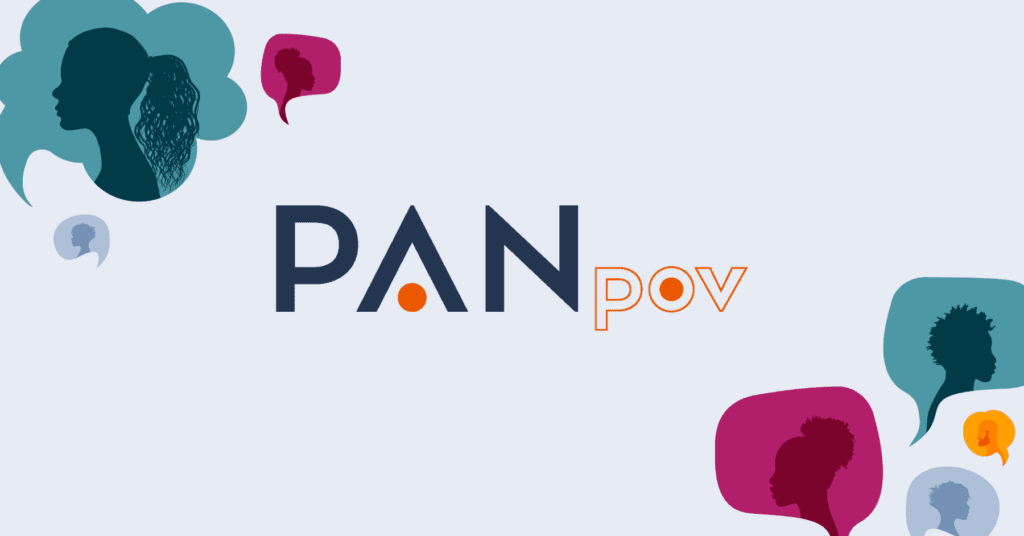Are you familiar with burst mode on your photo app? You know, when you accidentally take 10 photos in a row? This PANpov is about that. Sort of. It’s how I understand my mind—constantly cycling through thoughts, fixations, and worries. I’d swipe one away, and it’s like I used burst mode on the thought, and 30 more popped up.
Despite my racing thoughts, I’ve always prioritized mindfulness. Yoga, breathing exercises, meditation, and gratitude walks have been part of my routine. One tool, in particular, has been a lifesaver: Morning Pages. If you’re not familiar with this practice, it comes from Julia Cameron of “The Artist’s Way.” Each morning, write three stream-of-consciousness pages. No structure, no overthinking, just putting everything in my head onto paper. Then, I throw it away. It’s a mental reset that helps me sort out my thoughts and prepare for the day. But even with daily mindfulness practices like this, I realized last year that they weren’t enough to truly work through the obsessive and cyclical spirals that’d hijack my attention and happiness.
I wasn’t sure exactly what that meant for me. I’ve been on and off prescription meds throughout my life, and it always seemed straightforward—if you’re anxious or depressed, try one of the many pills available. But for me, they weren’t the solution I was looking for.
Then, I found a doctor through an LGBTQ resource in Indianapolis. By meeting a professional that valued and worked within my social community, I had a newfound energy to address my mental health. This person listened in a way I hadn’t experienced before. I’m not trying to criticize my previous doctors, but this session was different. We talked about obsessive-compulsive disorder (OCD)—something I was familiar with, and something a doctor once casually mentioned I “probably had.” But this time, the conversation went deeper. By the end of the session, I had a new prescription for OCD and attention-deficit disorder (ADD)—something I hadn’t considered before, but suddenly made sense.
I was always “half-doing” things: laundry half-folded, dinner half-cooked, emails half-written. I could start tasks, but finishing them felt impossible. Ironically, that “halfway” approach served me well in PR. It wasn’t that work was half-done, but rather that 30-minute bursts of focus, bouncing between multiple projects, kept things exciting. If I got bored with project A, I’d jump to B, C, and D, then cycle through them again. In an agency, the never-done-ness of it all can either propel you forward or overwhelm you. For a long time, juggling deadlines and clients worked for me. Until it didn’t.
Two weeks into my new prescription, things felt different. My mind was quieter. More straightforward. I could focus. I could finish what I started. I could “swipe” a thought away without feeling like 100 more would take its place. And that’s huge. I remember surprising myself and crying to my doctor on my next visit. At the time, I thought, “Well, this is embarrassing,” but now I realize that there isn’t anything embarrassing about directly confronting a personal or mental challenge. The unintentional tears were proof that something finally clicked into place, and it was such a meaningful shift for my day-to-day life.
Beyond the personal impact, this change transformed me as a PR pro. Before, I’d hop between emails, Slack messages, and projects, struggling to maintain attention during long Zoom calls. Now, I can stay engaged in back-to-back meetings without my mind racing elsewhere. When drafting a document, I no longer have to fight the urge to abandon it halfway through—I can focus from start to finish. The clarity and follow-through I’ve gained make me a better collaborator, a stronger strategist, and, frankly, a much less stressed-out version of myself.
If there’s one thing I’ve learned, it’s this: You don’t have to just “deal with it.” Sometimes, commitment to mindfulness alone isn’t enough. You need the right tools. Before, I white-knuckled my way through everything. “Move fast and break things” was a lifestyle that I was proud of because it felt like the only way I could get things done. Now, I have a new set of tools, my continued love for Morning Pages, an amazing art therapist, and the confidence to ask for help.
Hopefully, this doesn’t make me sound like I have it all figured out. My colleagues will tell you (politely) that’s not true. I’m still very much human. But I do believe the process of finding a problem, seeking a new path forward to solve it, and embracing a new level of vulnerability has made me a better teammate, a better PR pro, and a better me. So, if you can take away anything from my experience, let it be this: Have real conversations with yourself, professionals, and people who truly listen. You might look back a year from now with a newfound level of energy, happiness, and connection to the world.


